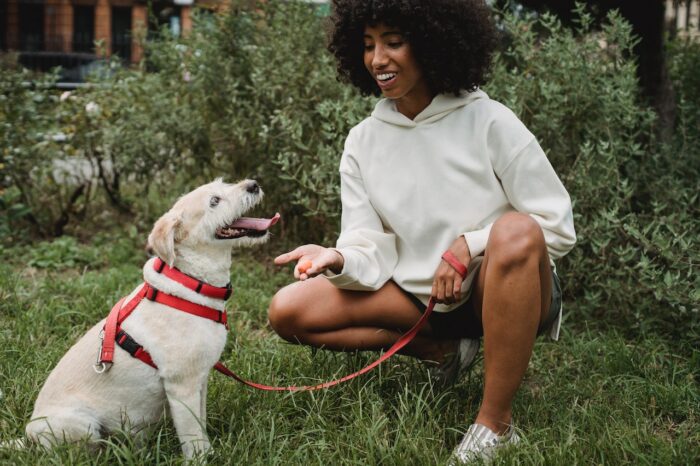The rapid transformation of the work-from-home model has not only reshaped how business owners function but has also dramatically changed our daily interactions with the unlikely — our pets! While the added time with our beloved furry companions has undoubtedly been a perk, an unexpected repercussion is the rise in separation anxiety in dogs — now dubbed COVID Dogs. A deeper bond, while certainly heartwarming, can make moments of separation more challenging, whether you’re going back to the office or simply running errands.
What Does Separation Anxiety in Dogs Look Like?
Separation anxiety in dogs can appear through a few different behavioral symptoms and with a wide range of intensity. The intensity and combination of these symptoms can vary, often hinging on the dog’s individual temperament, past experiences, level of training, and even genetics. Common signs to watch out for include excessive panting, drooling, persistent whining, and uncontrolled barking. More concerning are instances where dogs, even those impeccably housebroken, start having accidents indoors when the owner is away. Some dogs may resort to destructive behaviors when left alone, indicating heightened stress levels.
5 Tips to Combat Your Dog’s Separation Anxiety
If you notice your dog exhibiting any of these symptoms, don’t fret! Here are some effective strategies to help your four-legged friend cope better with separation.
1. Tire them out
Physical activity is a big deal in ensuring a dog’s well-being. An active dog is not just physically healthy but also mentally satisfied. Engaging in activities that challenge and tire them out can significantly mitigate feelings of anxiety. Consider long walks that tap into their curiosity or a jogging session that demands their endurance. If you’re outdoorsy, hiking and playing at the beach are fun and enriching forms of exercise — for both parties! Games of fetch, dog playdates, and interactive training sessions are also fantastic. These activities not only serve to exhaust their physical energy but also provide ample mental stimulation, making the subsequent separation easier on both you and your dog.
2. Utilize the crate
For many dogs, a crate isn’t just a containment tool; it’s a personal space. When introduced and used correctly, crate training can provide dogs with a sanctuary where they feel secure and protected. Choose a quiet and calming location, a room with soft lighting and away from the household bustle. This promotes relaxation, encouraging your dog to nap and rejuvenate while you’re occupied.
3. Give them enrichment toys
Dogs are intelligent creatures, craving both mental and physical challenges. Enrichment toys are designed to cater to this need, offering them intricate puzzles and tasks that keep their minds active. Popular options include treat dispensers that release rewards with effort, stuffable toys like Kong with their favorite treats, interactive puzzle games that demand problem-solving, and snuffle mats that tap into their foraging instincts. These toys keep them entertained while offering a sense of accomplishment.
4. Play some music or turn the TV on
A silent home can amplify feelings of loneliness for a dog. Introducing ambient sounds can bridge this void, offering a semblance of company. Soft, calming music or TV channels curated explicitly for dogs can provide auditory comfort. Some dogs find the muffled conversations from a TV show or the gentle strumming of an acoustic playlist reassuring, making the time apart less stressful.
5. Don’t acknowledge them when you leave and come home
Humanizing our pets is a natural tendency, especially when we share such deep bonds. However, long, emotional farewells or enthusiastic greetings can inadvertently heighten their anxiety. By making your comings and goings uneventful, you’re subtly communicating that these separations are routine and nothing to stress over. While it might feel unusual initially, with persistence, you’ll observe a marked difference in your dog’s reactions.
Conclusion
Transitioning to a work-from-home model comes with its set of unique challenges. As business owners, while we grapple with changing dynamics, we must meet our pets’ emotional needs. Separation anxiety, while concerning, is manageable with the right approach. By integrating these strategies, we nurture a healthier environment for our pets and cultivate a space where we, as owners, can function productively, knowing our furry friends are content. After all, our pets play an irreplaceable tune in the harmonious symphony of life.
Find a Home-Based Business to Start-Up >>> Hundreds of Business Listings.

















































